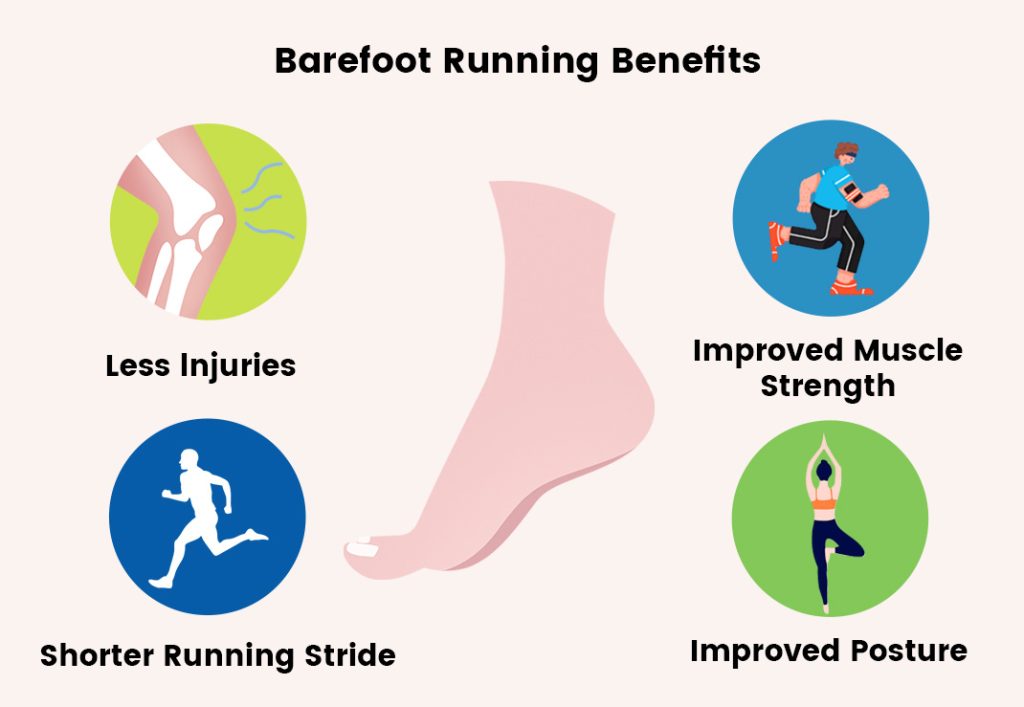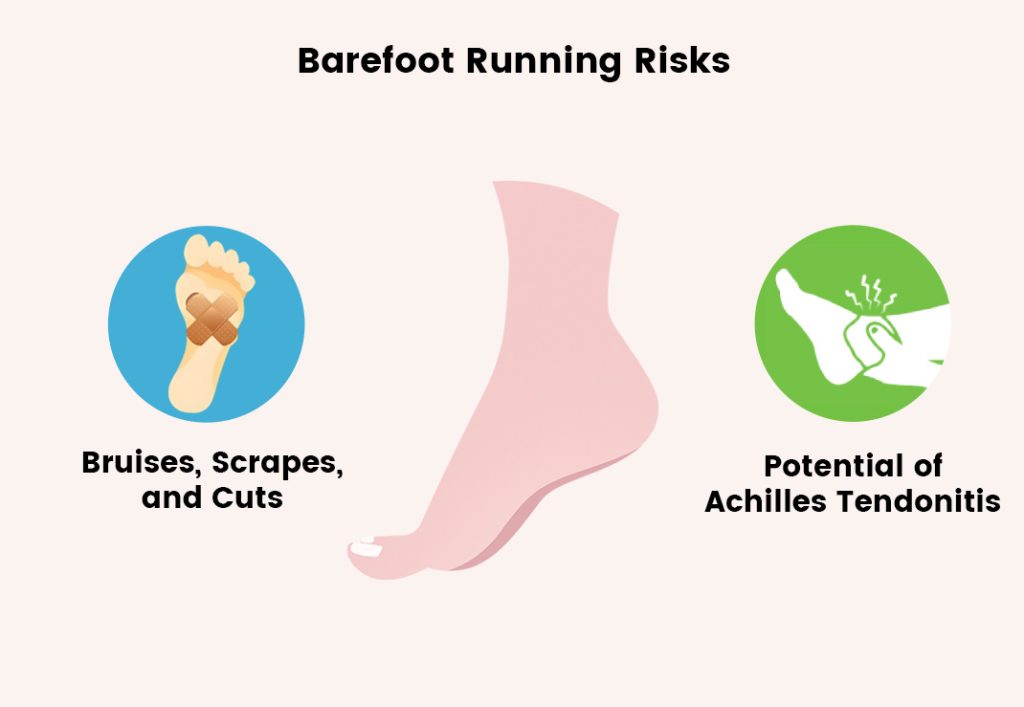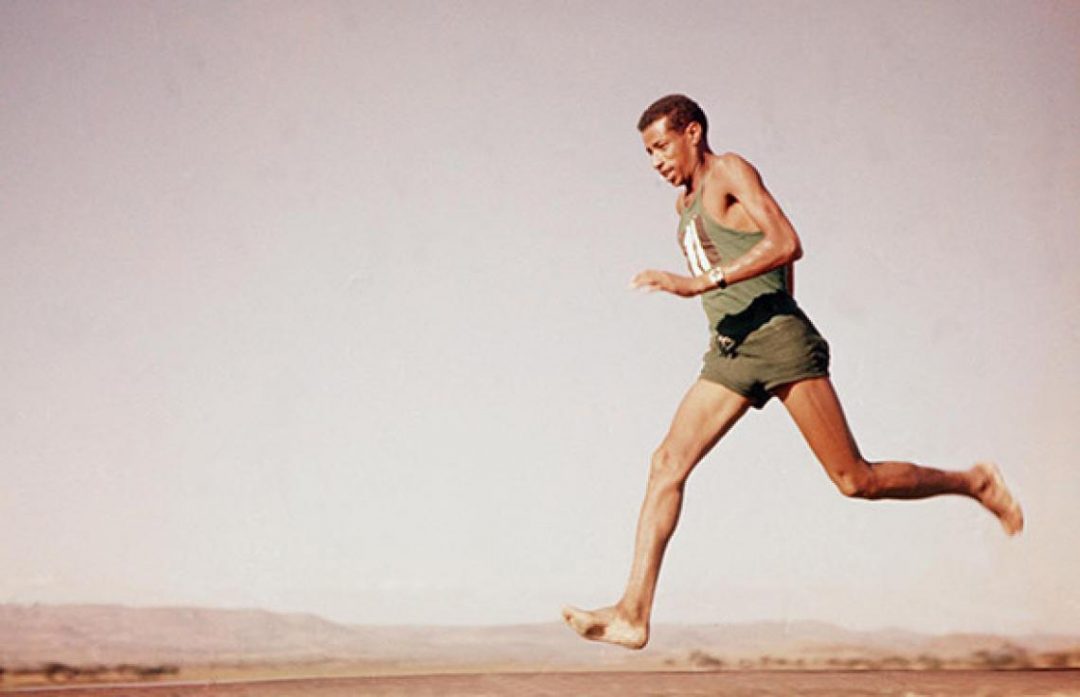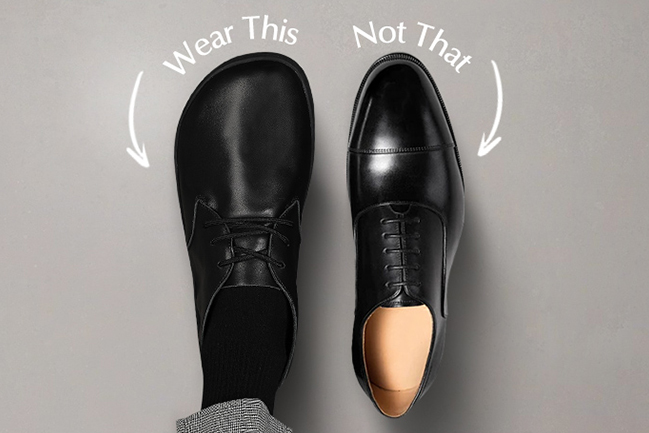This year, an article titled “From barefoot hunter gathering to shod pavement pounding. Where to from here? A narrative review” published in BMJ (British Medical Journal) tells us that humans are actually more suitable for barefoot running.
Before this paper was published, there were also studies that found that barefoot running can lead to a reduction in stride length and increased plantar and knee flexion. This analysis of 55 Kenyan runners found that their peers who were accustomed to barefoot showed a lower load rate in comparison, which was believed to be due to the optimization of the limb position in contact with the ground and the pre-activation of muscles.
In contrast, wearing running shoes will guide the runner’s heel to land first, which will increase the center of gravity, and the heel cannot play a buffering role, which will cause the limbs to suffer more impact and be easily injured.
In addition to reducing injuries, what are the benefits of barefoot exercise? Is barefoot exercise suitable for everyone?
The Benefits of Barefoot Running
- Enhance the strength and stability of foot muscles
1. Exercise foot muscles
Studies have found that long-term barefoot walking and exercise can effectively exercise the muscles of the feet. Compared with wearing shoes, the muscles of the feet need to be more involved in the process of balancing and supporting the body when barefoot. This helps to enhance the strength, endurance and flexibility of the foot muscles. For example, the small muscle groups on the soles of the feet will be more fully exercised during barefoot exercise, and these muscles are essential for maintaining the stability of the arches.
2. Improve joint stability
Barefoot exercise can also enhance the stability of the foot joints. When we walk or run barefoot, the feet are better able to sense changes in the ground, and the joints will naturally adjust to adapt to different terrains. This adaptive training can strengthen the muscles and ligaments around the joints, improve joint stability, and reduce the risk of injury. For example, when running barefoot in some natural environments, such as on grass or on the beach, the feet will make fine adjustments according to the softness and unevenness of the ground, thereby enhancing the stability of the ankles, knees and hip joints.
- Improve body coordination and balance
1. Enhanced neurofeedback
When barefoot, the direct contact between the feet and the ground can provide richer neurofeedback. The receptors on the soles of the feet can sense information such as the texture, hardness and temperature of the ground, and transmit this information to the brain. The brain processes this information and adjusts the body’s posture and movements, thereby improving the body’s coordination and balance. For example, when doing yoga or balance training, barefoot allows practitioners to better feel the body’s center of gravity and balance, which helps to improve the training effect.
2. Improved proprioception
Barefoot exercise can also improve proprioception, that is, the body’s ability to perceive its own position and movement. Through the interaction between barefoot and the ground, the body can more accurately perceive the position and movement of each joint, thereby better coordinating muscle contraction and relaxation. This improvement in proprioception is very important for various sports, such as dance, martial arts, and ball games. For example, when basketball players train barefoot, they can better feel the force of their feet and the balance of their bodies, improving the accuracy of shooting and dribbling.
- Promote natural running posture and exercise efficiency
1. Mid-forefoot landing
Research shows that barefoot running often prompts people to adopt a more natural mid-forefoot landing method. Compared with the traditional heel landing method, mid-forefoot landing can reduce the impact on the joints and reduce the risk of injury. At the same time, this landing method can also utilize the elasticity of the feet and legs to improve the efficiency of running. For example, among some long-distance running enthusiasts, barefoot running is gradually adopted to improve running posture, reduce the possibility of injury, and increase running speed and endurance.
2. Stride and cadence adjustment
Barefoot exercise can also prompt people to adjust their stride and cadence. Because the perception of the ground is more acute in the barefoot state, people will naturally adjust their pace to make the stride more moderate and the cadence more reasonable. This adjustment can reduce energy waste and improve the efficiency of exercise. For example, when doing sprint training, barefoot allows athletes to better feel the reaction force of the ground and adjust their stride and cadence to achieve the best speed and explosive power.
- Psychological and emotional benefits
1. Enhance connection with nature
Barefoot exercise allows people to get closer to nature and establish a more direct connection with the earth. This connection with nature can bring psychological relaxation and pleasure, and reduce stress and anxiety. For example, walking barefoot in the park or on the beach can make people feel the beauty of nature, relax their body and mind, and relieve the stress of daily work and life.
2. Improve concentration and self-confidence
Barefoot exercise requires people to focus more on the sensations and movements of the body, which helps to improve concentration. At the same time, successful barefoot exercise can also enhance people’s self-confidence and self-cognition. For example, after completing a barefoot long-distance run or challenging some difficult barefoot sports, people will feel their physical abilities and potential, thereby enhancing their self-confidence.

The Risks of Barefoot Running
- Increased risk of injury
Although barefoot running has many benefits, it cannot be ignored that it also increases the risk of injury. Without the protection of shoes, the feet are easily injured by small stones, glass slag and other debris on the ground, causing injuries to the soles of the feet, toes and other parts. In public places such as city streets and parks, there are often various potential dangers on the ground, which may cause harm to barefoot runners.
- May cause bacterial infection
There are relatively more bacteria and other attachments on the ground. When running barefoot, the skin of the feet is in direct contact with the ground and is easily invaded by bacteria. If there is a wound on the foot, the risk of bacterial infection will increase further, which may cause redness, swelling, pain, etc., and even cause systemic infection in severe cases.
- Not suitable for all road surfaces
Barefoot running has high requirements for the road surface, and not all roads are suitable for barefoot running. Hard concrete roads, rugged mountain roads, etc. will cause greater impact on the feet and easily cause foot injuries. In contrast, soft grass, beaches and other roads are relatively suitable for barefoot running, but these venues are not everywhere, which also limits the development of barefoot running.
In addition, in the hot summer, the ground temperature is high, and barefoot running may burn the soles of the feet; in the cold winter, the ground temperature is too low, which will cause frostbite to the feet. Therefore, barefoot running needs to be selected according to the actual road conditions and weather conditions.

What Should You Pay Attention to When Running Barefoot?
- Barefoot running can be done during the day, and choose a flat and clean road surface, such as a plastic track. Don’t run barefoot at night.
- It is not suitable to run barefoot when it is too hot or too cold, be careful to prevent burns or frostbite.
- It is best to run on land, grass, beaches and other surfaces, and pay attention to adjusting the pace, frequency, and posture at any time.
- When you first start training, you can choose a clean, soft and moderately soft section to walk barefoot. When running short distances, the speed should not be too fast, and the distance and intensity should be increased step by step.















